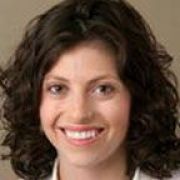Amid all of the pandemic’s tragedies, our medical students’ education could not be another sacrifice. Before COVID-19, our third year medical student clerks spent four days a week seeing patients at their family medicine preceptors’ offices, and then gathered back in the classroom on Fridays for a robust didactic curriculum. It was a day both to review core topics and to get together as a group with breakfast and lunch, the latter a not-so-hidden feature of the program intending to alleviate some of the inherent loneliness of a non-hospital-based rotation comprising one student intensely working with one preceptor.
Alas, COVID-19 hit. After a spring hiatus, masked students returned to their clinical duties, but all in-person classroom programming was suspended. Enter virtual learning!
Like many medical schools across the globe, we quickly pivoted to a Zoom didactic program. But cautioned by the famous story of the New York Times adding online content – at the internet’s birth the newspaper was a static PDF capture of the physical paper, not the searchable, updated, interactive version of today’s 20-year-old world wide web— we did not wish to merely upload the “PDF” version of our lectures onto Zoom. Rather, we seized the opportunity to radically transform the course and take advantage of technology’s features, rather than fighting against its barriers.
Our new online, flipped classroom enjoyed at least three wins. First, time on Zoom is different from time in the physical classroom. No matter how engaging the teacher, a full day parked at a screen listening to lectures - even without a dreaded series of PowerPoint bullets whizzing by - is challenging at best and impossible at worst. We shortened each didactic day from 8 hours in the classroom to 4 hours in the virtual room, decreasing the phenomenon we instinctively predicted and that was later confirmed: Zoom Fatigue. Virtual class was scheduled in the afternoon; we protected the students’ mornings to study and prepare. We flipped the classroom, requiring the students to read in advance of the session, which was previously not the norm. Turning the clerkship curriculum on its head required careful sorting of which material fit best as asynchronous learning and which suited synchronous classroom conversation. We found new study materials (Videos! Quiz questions! Web resources!) to engage students on their own. Big win: shifting half the didactic hours to individual study meant we encouraged students to become more self-directed as they prepared for class however best suited them. And it turns out students appreciate flipping!
Second, it was not just about spending less time together. We climbed up Bloom’s Taxonomy. Zoom experiences are different from in-class learning. We spent our precious Zoom minutes engaged in higher-order cognitive work: applying information, role playing, synthesizing, discussing deeply, problem solving. We took advantage of advanced software features: breakout rooms, chat function, screen sharing for quizzes and games, and video-recording student interviews of standardized patients for students to privately review later. We trained standardized patients to role play and give feedback on Zoom. We developed a new session called The Hypertension Escape Room: each small group of students raced to solve tricky hypertension situations by treating complex virtual patients in order to escape their breakout room. With students having already conquered basic concepts and arriving ready to apply them in Zoom-class, we maximize time together, highlight specific areas that need further elucidation, engage students in discussion, and avoid dwelling on topics already mastered. Another win: students are more engaged, class time feels more productive, and - additional hidden curriculum - when needing to apply concepts to challenging patient cases in class, students better appreciate the cognitive complexities inherent in primary care.
Last, physical distancing is famous for propagating isolation. But because geography is now irrelevant when using Zoom, we joined forces with our sister program in another state running a parallel didactic series for 10% of the class in a rural track. What a silver lining to be able to combat some social isolation of our rural track students by including them in our didactics! They no longer wonder what their urban classmates are learning. In fact, during the initial month of the lockdown, some of our students had hunkered down with their families in other time zones. We held didactics convenient for East and West Coast students. It mattered not whether our Zoom Gallery showcased participants drinking their morning coffee or wearing exercise clothes for an afternoon run. The virtual room brought us closer than we would have been on the physical campus.
In case you are wondering, students loved this! The pangs of not physically gathering seem to be balanced by the convenience of logging in from home. They appreciated the freedom to prepare for class at one’s own pace and their protected reading mornings. Overall, students were grateful to the faculty for the efforts invested in creating the synchronous virtual classroom. While we are excited to return – vaccinated and mask-free — to campus someday, to see our whole students, not just their backlit bobbing heads in a dizzying checkerboard, we certainly zoomed to some successes that we will hold onto in a post-pandemic teaching landscape.
What silver linings from teaching this year might you preserve after the pandemic? Comment below to join the conversation!
Did you know that the Harvard Macy Institute Community Blog has had more than 245 posts? Previous blog posts have explored topics including engaging students virtually, applying the 6 C’s of motivation to online learning, and being together, when apart.
Deborah R Erlich MD MMedEd FAAFP

Deborah Erlich, MD, MMedED, FAAFP (Educators ‘20) is a medical educator and family physician. Deb is the Vice Chair for Education in the Department of Family Medicine at Tufts University School of Medicine. Her areas of professional interest include innovative medical education, information mastery and preventive medicine. Deb can be contacted via email.

